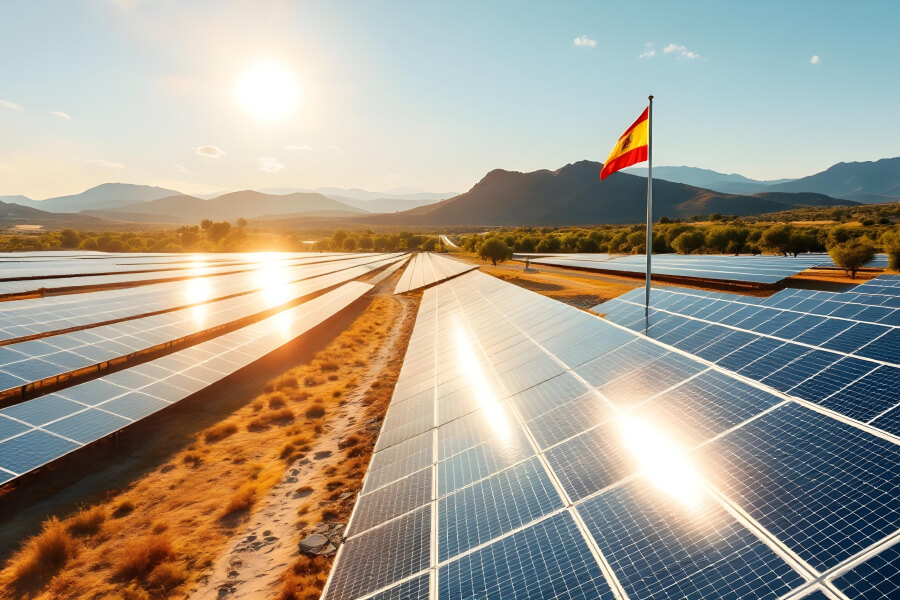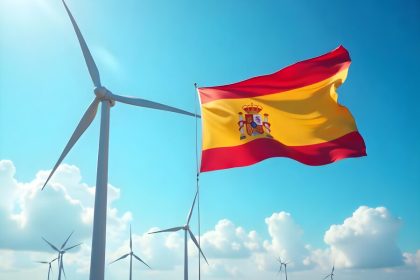Spain has long been recognized for its abundant sunshine, making it an ideal location for harnessing solar energy in Spain.
This article takes you through the historical journey of solar energy in Spain, detailing its growth, challenges, and future potential in the renewable energy landscape.
The Origins of Solar Energy Adoption in Spain
The journey of solar energy in Spain began as early as the 20th century. During this time, pioneers recognized the huge potential of solar power and started experimenting with various technologies.
Early innovations, such as solar water heaters and photovoltaic (PV) cells, set the foundation for a solar energy revolution that would follow.
First Solar Projects in the 20th Century
The first significant solar projects in solar energy in Spain emerged during the 1970s, driven by global energy crises and a growing awareness of environmental issues.
A landmark development was the establishment of the Solar Energy Research Institute in Almería in 1981, which became a hub for solar research and development.
This center attracted attention from both national and international communities, highlighting Spain’s commitment to solar energy in Spain as a viable energy source.
Government Policies and Incentives Shaping Solar Energy
Key Legislation and Regulatory Frameworks
Government policies have been important in shaping the landscape of solar energy in Spain. In the early 2000s, the Spanish government introduced several favorable laws, including the Feed-in Tariff (FiT) system, which guaranteed fixed payments for solar energy producers.
This law encouraged investments in solar energy projects and led to a boom in solar installations across the nation.
Impact of the Feed-in Tariff System
The implementation of the FiT system marked a turning point for solar energy in Spain. By 2008, Spain had become the second-largest producer of solar energy worldwide, boasting an installed capacity of over 3,500 megawatts.
This wave underscored the potential of solar energy to contribute significantly to Spain’s energy mix and showcased the country’s dedication to renewable resources.
Current Changes in Law and Their Implications
However, the landscape shifted dramatically with the introduction of the controversial ‘Sun Tax’ in 2013, which put out fees on solar energy producers. This policy led to a decline in new installations and sparked considerable public outrage.
Many argued that the ‘Sun Tax’ undermined Spain’s commitment to solar energy in Spain, creating significant uncertainty in the industry.
Major Developments in Solar Energy Capacity Over the Years
Milestones in Photovoltaic Installed Capacity
Despite facing challenges, solar energy in Spain has continued to evolve. By 2021, the country’s installed capacity for solar photovoltaic (PV) systems exceeded 13,000 megawatts, demonstrating a resilient and adaptable industry.
Innovations in Solar Thermal Technology
In addition to PV systems, solar energy in Spain has also made significant advancements in solar thermal technology.
Solar thermal plants utilize mirrors to concentrate sunlight and generate steam for electricity production.
These innovations reinforce Spain’s reputation as a leader in solar technology and contribute to the diverse applications of solar energy in Spain.
The Controversial ‘Sun Tax’ and Its Impact
Background and Rationale for the Sun Tax
The introduction of the ‘Sun Tax’ was framed as a measure to stabilize the energy market and reduce aid for renewable energy.
It faced an angry reaction from solar supporters who argued that it undermined the principles of sustainability and energy independence.
The tax affected existing solar producers and prevented new investments in solar energy in Spain.
Public Response and Industry Reactions
Public response to the ‘Sun Tax’ was overwhelmingly negative. Protests explode across the country, with solar energy supporters calling for a reversal of the law.
Industry leaders argued that this tax would suppress innovation and stop Spain’s ability to meet its renewable energy targets.
Consequences for Solar Energy Growth in Spain
The consequences of the ‘Sun Tax’ were significant. Spain experienced a dramatic decline in new solar installations, with many companies scaling back or leaving the market altogether.
This downturn raised concerns about the nation’s commitment to renewable energy and its future in the solar sector.
Catalysts for Growth: Economic Factors and International Influence
Global Energy Trends and Their Effect on Spain
Despite the challenges posed by domestic policies, global energy trends have favored the revival of solar energy in Spain.
As nations worldwide transition towards renewable energy sources, Spain has the opportunity to influence its natural resources and technological advancements to reclaim its position as a leader in solar energy.
Investment and Funding Opportunities in the Solar Sector
Investment in solar energy is important for the future of solar energy in Spain. International companies and investors are increasingly looking towards Spain for opportunities in solar technology.
Public-private partnerships, coupled with government incentives, can foster an environment conducive to solar growth, promoting innovation and job creation.
The Role of Research and Development in Advancing Solar Technologies
Research institutions across Spain have been instrumental in advancing solar technologies. Collaborative efforts between academia and industry have led to groundbreaking innovations, positioning Spain as a key player in the global solar market.
Development initiatives can further improve the efficiency and affordability of solar energy in Spain.
Regional Variations in Solar Energy Deployment Across Spain
Geographical Advantages of Different Regions
Spain’s diverse geography offers unique advantages for solar energy deployment. Regions such as Andalusia and Extremadura, which enjoy high solar irradiance, are particularly well-suited for solar farms.
Local governments in these areas have recognized these advantages and implemented initiatives to support solar adoption.
Local Government Initiatives Supporting Solar Adoption
Local governments play an important role in promoting solar energy. Many towns have introduced incentives for residents and businesses to install solar panels, fostering a culture of sustainability.
Community solar projects also provide opportunities for individuals to participate in renewable energy production, making solar energy in Spain more accessible to everyone.
The Future of Solar Energy in Spain: Challenges and Opportunities
Technological Advancements on the Horizon
The future of solar energy in Spain looks promising, with numerous technological advancements on the horizon.
Innovations such as bifacial solar panels and energy storage solutions are set to revolutionize the industry, improving both efficiency and trustiness.
As technology continues to evolve, Spain can capitalize on these advancements to drive solar adoption.
Long-term Sustainability and Environmental Impact
Sustainability remains at the forefront of Spain’s energy strategy. The commitment to reducing greenhouse gas emissions and transitioning to renewable energy sources aligns with global efforts to combat climate change.
Embracing solar energy not only benefits the environment but also contributes to energy independence and economic resilience.
Projections for Solar Energy Growth by 2030 and Beyond
Looking ahead, Spain aims to significantly increase its solar energy capacity by 2030. Government projections indicate that solar energy could account for up to 20% of the country’s total energy consumption.
Achieving these goals will require collaborative efforts from policymakers, industry leaders, and the public.
Conclusion
The history of solar energy in Spain is a tale of resilience, innovation, and a commitment to sustainability.
While challenges such as the ‘Sun Tax’ have tested the industry, the potential for growth remains strong.
With continued investment, research, and community engagement, Spain can reclaim its status as a leader in solar energy, paving the way for a brighter, greener future.
You can discover more about wind energy to read more about it.
FAQs
What percentage of Spain’s energy is solar?
As of 2021, solar energy accounts for approximately 10% of Spain’s total energy production, with projections for significant growth in the coming years.
Why don’t houses in Spain have solar panels?
Barriers such as initial installation costs, lack of awareness, and regulatory challenges have contributed to the slower adoption of solar panels in residential areas.
Why does Spain not have more solar energy?
Policy fluctuations, including the ‘Sun Tax,’ have created uncertainty for investors and hindered the rapid growth of solar energy installations in Spain.
What is the history of solar energy sources?
The history of solar energy spans several decades, with early adoption in the 20th century, significant growth in the 2000s, setbacks due to policy changes, and a promising outlook for the future.








